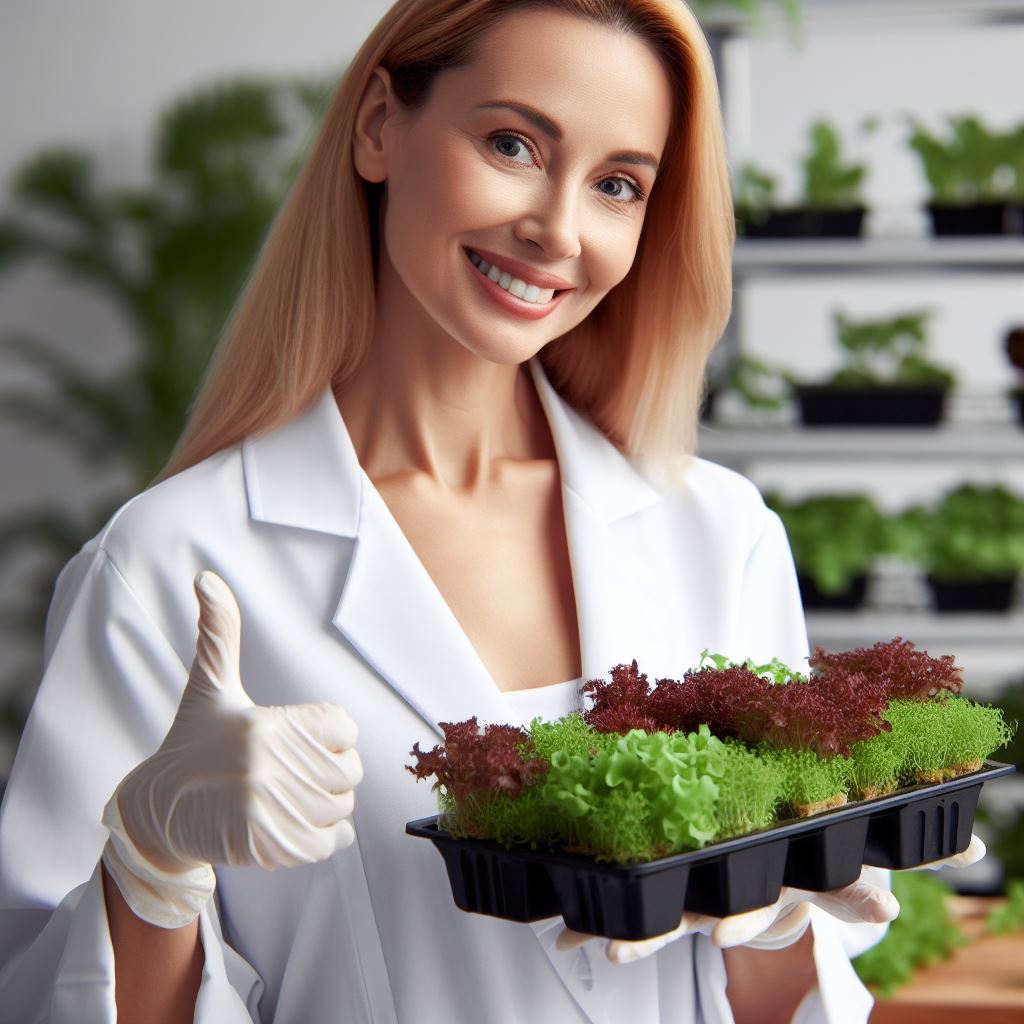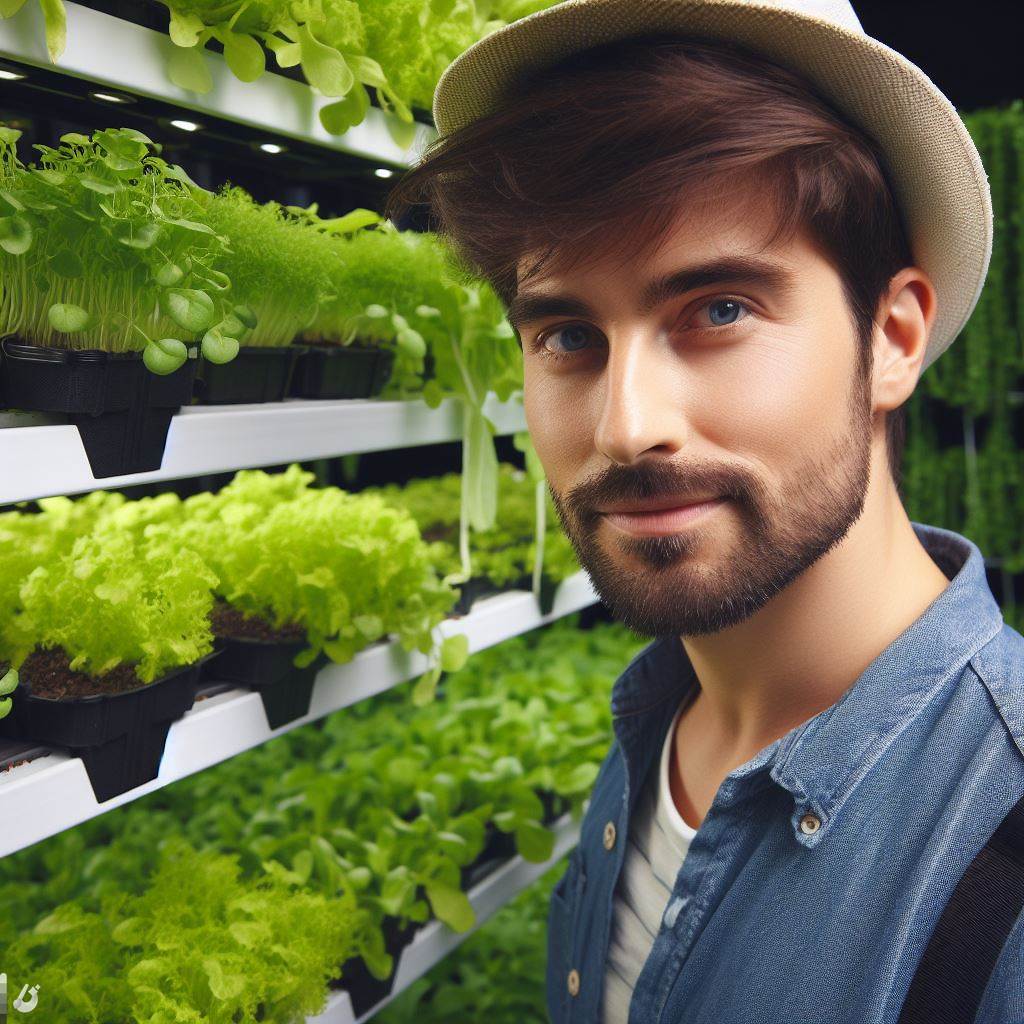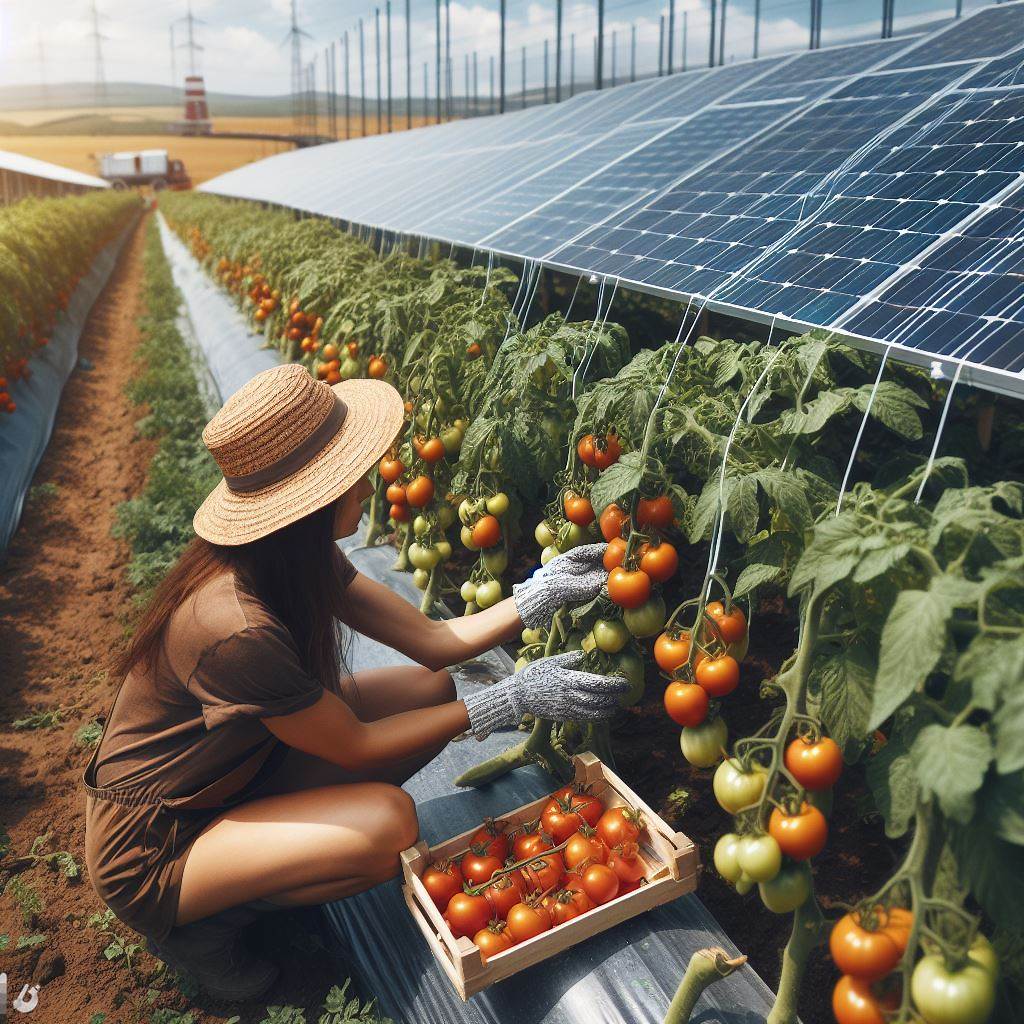Introduction
Explore hydroponics, a soil-free farming trend, to understand the latest technology trends in agricultural practices and sustainability.
A. Definition of hydroponics
Hydroponics is a fascinating method of farming that allows plants to grow without soil.
Instead, plants are grown using a nutrient-rich water solution.
B. Brief history of hydroponics
The use of hydroponics dates back to ancient civilizations, with the Hanging Gardens of Babylon being one of the earliest known examples.
C. Importance of soil-free farming
So why is soil-free farming so important? There are several reasons.
Firstly, hydroponics allows for the conservation of water. In traditional farming methods, a substantial amount of water is lost due to evaporation and run-off.
However, in hydroponics, water is recirculated and reused, significantly reducing water waste.
Secondly, hydroponics maximizes space utilization. As urbanization continues to increase, available land for traditional agriculture is decreasing.
Hydroponics provides a solution by allowing plants to be grown vertically or in compact spaces, making it possible to grow more crops in less area.
Lastly, hydroponics enables precise control over nutrient levels. In traditional farming, soil quality varies, leading to inconsistent nutrient availability for plants.
With hydroponics, growers have complete control over the nutrient solution, ensuring plants receive optimal nutrition for growth and development.
In short, hydroponics is a soil-free farming technique that offers numerous benefits.
By eliminating the need for soil, water is conserved, space is maximized, and nutrient control is optimized.
As technology advances, hydroponics is likely to play an even more significant role in the future of agriculture.
Advantages of Hydroponics
Hydroponics, a soil-free farming technique, offers numerous advantages over traditional agriculture methods.
Transform Your Agribusiness
Unlock your farm's potential with expert advice tailored to your needs. Get actionable steps that drive real results.
Get StartedBy utilizing water to deliver nutrients directly to the plants, hydroponics allows for efficient water use, year-round cultivation, and increased control over nutrient delivery.
Additionally, it reduces the incidence of pests and diseases while offering higher yields compared to traditional farming.
A. Efficient use of water
One of the key advantages of hydroponics is its efficient use of water.
Traditional agriculture requires large amounts of water, often leading to unnecessary waste.
In hydroponics systems, water is recirculated and used more efficiently, resulting in up to 90% less water consumption.
This makes hydroponics a more sustainable option, particularly in regions facing water scarcity.
B. Year-round cultivation
Another significant advantage is the ability to cultivate crops year-round.
Unlike traditional farming, hydroponics is not constrained by seasonal changes.
By providing a controlled environment for plants, hydroponics enables farmers to grow crops all year, ensuring a consistent food supply and reducing reliance on seasonal harvests.
C. Increased control over nutrient delivery
Hydroponics also offers increased control over nutrient delivery.
Unlike soil, which may have inconsistent nutrient levels, hydroponics allows for precise control of the nutrient solution.
This means that plants receive the exact nutrients they require for optimal growth, resulting in healthier plants and higher crop yields.
D. Reduction in pests and diseases
Furthermore, hydroponics eliminates common pests and diseases associated with soil-based farming.
Soil acts as a host for various pests and diseases, which can easily spread and damage crops.
With hydroponics, plants are kept in a soil-free environment, minimizing the risk of infestations and diseases.
This not only reduces the need for pesticides but also promotes healthier and more sustainable agriculture.
E. Higher yields compared to traditional farming
In addition to pest and disease control, hydroponics can lead to higher crop yields compared to traditional farming methods.
By providing optimal growing conditions, including precise nutrient delivery, controlled lighting, and temperature regulation, hydroponics fosters accelerated plant growth.
This results in larger and more abundant harvests throughout the year.
In fact, hydroponics offers many advantages over traditional farming methods.
Its efficient use of water, year-round cultivation, increased control over nutrient delivery, reduction in pests and diseases, and higher crop yields make it a promising solution for sustainable agriculture.
With the growing challenges of climate change, water scarcity, and food security, hydroponics presents an innovative approach to meet these demands and ensure a more efficient and productive future in farming.
Read: Vertical Farming: The Rise of Urban Agriculture
Types of Hydroponic Systems
Hydroponics is a soil-less farming technique that is gaining popularity due to its numerous benefits and innovative systems.
Showcase Your Farming Business
Publish your professional farming services profile on our blog for a one-time fee of $200 and reach a dedicated audience of farmers and agribusiness owners.
Publish Your ProfileWith traditional farming practices facing challenges like land scarcity and water shortage, hydroponics presents a sustainable solution to meet the growing demand for food.
In this section, we will explore the different types of hydroponic systems used in modern agriculture.
A. Nutrient Film Technique (NFT)
One of the most popular hydroponic systems is the Nutrient Film Technique (NFT).
This system involves a continuous flow of a thin film of nutrient-rich water over the plant roots, allowing for efficient absorption of essential nutrients.
The NFT system maximizes water and nutrient usage, making it a highly efficient choice for commercial farming.
B. Deep Water Culture (DWC)
Another widely used hydroponic system is Deep Water Culture (DWC), where plants are suspended in a nutrient solution, with their roots submerged directly.
This method promotes rapid plant growth as roots have constant access to oxygen and nutrients.
DWC is a simple and low-cost system that is ideal for beginners in hydroponics.
C. Drip System
The Drip System is a versatile hydroponic system that operates by providing a slow and steady drip of nutrient solution to the plants.
This technique allows for precise control over the nutrient delivery and is commonly used in both small-scale and large-scale hydroponic setups.
D. Aeroponics
An advanced hydroponic system is Aeroponics, which involves suspending plants in the air and misting their roots with a nutrient solution.
This method allows for optimal oxygenation of the root zone, promoting faster growth and higher yields.
Aeroponics is popular among researchers and high-tech agricultural enthusiasts.
E. Vertical Farming
Vertical farming is an innovative approach that combines hydroponics with vertical stacking of plants in controlled environment agriculture (CEA) settings.
This system maximizes space efficiency and reduces the need for land, making it an ideal solution for urban farming and high-density crop production.
Vertical farming is widely adopted by urban farmers and foodtech companies.
In general, hydroponics offers a range of soil-free farming techniques that are revolutionizing the agricultural industry.
From the efficient Nutrient Film Technique (NFT) to the space-saving Vertical Farming, hydroponics provides sustainable solutions for food production.
As we continue to face environmental challenges, hydroponic systems offer the potential to produce more food with fewer resources, contributing to a greener and more sustainable future.
Read: Sustainable Tech in Agriculture: A New Era
Essential Components for Hydroponics
Hydroponics, a soil-free farming marvel, demands meticulous attention to its essential components.
Let’s dive into the key elements crucial for a thriving hydroponic setup.
A. Growing Mediums
Selecting the right growing medium is paramount. Perlite, a lightweight volcanic rock, promotes optimal root support and aeration.
Coconut coir, derived from coconut husks, retains moisture and enhances nutrient absorption.
B. Nutrient Solutions
Maintaining a balanced nutrient solution is vital for hydroponic success.
Regularly monitor and adjust the pH levels to ensure optimal nutrient uptake by the plants.
Invest in high-quality nutrient solutions to provide a well-rounded diet for your crops, ensuring robust growth and development.
C. Lighting Systems
The choice between natural and artificial lighting is pivotal.
Natural sunlight is excellent, but artificial LED systems allow you to tailor the light spectrum to meet specific crop requirements.
Ensure your lighting system aligns with the needs of your plants for photosynthesis and overall health.
D. Ventilation and Air Circulation
Effective ventilation and air circulation are crucial components in hydroponic systems.
Install fans to facilitate proper air exchange, preventing the stagnation of air.
This promotes oxygen flow to the roots, preventing issues like root rot and ensuring a healthy growing environment.
E. Monitoring and Control Systems
Real-time monitoring is the backbone of hydroponics. Employ sensors to track pH levels, nutrient concentrations, and environmental conditions.
Implementing a robust control system allows you to make immediate adjustments, maintaining an optimal environment for your plants to flourish.
To sum it up, the success of hydroponics lies in the careful selection and management of its essential components.
By focusing on the right growing mediums, nutrient solutions, lighting systems, ventilation, and monitoring systems, you pave the way for a thriving soil-free farming venture.
Read: Agri-Drones: Changing the Face of Farming

Challenges and Solutions in Hydroponics
A. Initial setup costs
- Hydroponic systems typically require higher initial investment compared to traditional soil-based farming.
- However, with advancements in technology, there are now more affordable options available for beginners.
- Opting for DIY hydroponic systems or starting with smaller setups can help reduce the initial costs.
- Additionally, government grants and subsidies are often available to support the adoption of hydroponics.
B. Maintenance and monitoring requirements
- Hydroponic systems require regular monitoring of nutrient levels, pH balance, and water quality.
- Automated monitoring and control systems can simplify the process and minimize human intervention.
- Regular maintenance tasks include cleaning and sanitizing the system, checking for clogged filters, and inspecting pumps.
- Implementing regular maintenance schedules and keeping detailed records can help ensure the system’s efficiency.
C. Disease and pest management
- Hydroponics can be susceptible to certain pests and diseases, but with proper management, these issues can be mitigated.
- Implementing strict hygiene practices and regularly cleaning the system can prevent the buildup of pathogens.
- Biological control methods, such as introducing beneficial insects, can help control pests without the use of pesticides.
- Regular scouting and early detection of pests or diseases can minimize potential damage and enable prompt treatment.
D. Environmental sustainability and energy consumption
- Hydroponics can be resource-intensive, requiring energy for artificial lighting and climate control.
- However, advancements in LED lighting technology have made it more energy-efficient and environmentally friendly.
- Implementing energy-efficient systems, such as using renewable energy sources or optimizing light and temperature settings, can reduce energy consumption.
- Recirculating nutrient solutions and implementing water-saving techniques also contribute to environmental sustainability.
E. Knowledge and expertise
- Hydroponics requires specialized knowledge and expertise to set up and operate efficiently.
- Investing in training and education programs can help individuals gain the necessary skills.
- Joining hydroponic communities or seeking guidance from experienced growers can provide valuable insights and support.
- Continuous learning and staying updated with the latest advancements and research in hydroponics are essential for success.
Basically, while hydroponics offers numerous advantages, it also presents certain challenges.
Initial setup costs, maintenance requirements, disease and pest management, environmental sustainability, and the need for knowledge and expertise are some of the challenges faced by hydroponic farmers.
Showcase Your Farming Business
Publish your professional farming services profile on our blog for a one-time fee of $200 and reach a dedicated audience of farmers and agribusiness owners.
Publish Your ProfileHowever, with proper planning, careful monitoring, and the implementation of appropriate solutions, these challenges can be overcome.
As technology continues to advance and become more accessible, the barriers to entry in hydroponics are gradually decreasing, making it an increasingly viable and sustainable method of farming.
Emerging Trends in Hydroponics
A. Aquaponics integration
This a combination of aquaculture and hydroponics, is gaining popularity for sustainable food production.
It allows the cultivation of plants and fish in a symbiotic environment.
This trend is focused on achieving a closed-loop system that maximizes resource efficiency and minimizes waste.
The waste produced by fish is converted into nutrients for the plants through bacterial breakdown.
Aquaponics integration offers a holistic approach to farming, providing both plant-based and protein-based food sources.
B. Use of renewable energy sources
To create a more sustainable and eco-friendly hydroponic system, renewable energy sources are now being utilized.
Solar panels are commonly used to power hydroponic farms, reducing dependence on traditional electricity sources.
Wind energy and geothermal energy are also being explored as alternative power sources for hydroponics.
By incorporating renewable energy, hydroponic farms can reduce their carbon footprint and operate more efficiently.
Using clean energy sources aligns with the overall goal of sustainable food production and environmental preservation.
C. Automation and robotics
The integration of automation and robotics has revolutionized hydroponic farming practices.
Automated systems control and monitor various aspects of hydroponics, such as nutrient delivery and pH levels.
Robotic systems can perform tasks like planting, harvesting, and maintenance, reducing the need for human labor.
This trend improves efficiency, accuracy, and productivity while reducing the overall labor costs associated with hydroponics.
The use of automation and robotics also ensures consistent and precise crop management, resulting in higher yields.
D. Urban gardening initiatives
Hydroponics is becoming a popular solution for urban gardening initiatives, where space is limited.
Vertical hydroponic setups allow urban dwellers to grow their own fresh produce in small apartments or balconies.
Community gardens and rooftop farms are utilizing hydroponics to increase access to fresh, locally grown food.
By bringing agriculture into urban areas, hydroponics promotes food security and strengthens community engagement.
Urban gardening initiatives also contribute to reducing food miles and carbon emissions associated with transportation.
E. Genetic modifications for optimized growth
Genetic modifications are being explored to enhance the growth and productivity of hydroponic crops.
Scientists are engineering plants with traits like improved nutrient uptake and disease resistance.
Genetic modifications can also help plants thrive in challenging environments, such as high salinity or extreme temperatures.
By developing genetically modified crops, hydroponics can overcome limitations and achieve higher yields.
However, ethical considerations and proper regulation are necessary to ensure the safety and sustainability of these modifications.
In a nutshell, hydroponics is experiencing several emerging trends that aim to improve its efficiency, sustainability, and productivity.
Aquaponics integration combines aquaculture and hydroponics to create a closed-loop ecosystem.
The use of renewable energy sources reduces the environmental impact of hydroponic farms.
Automation and robotics enhance precision and productivity while reducing labor costs.
Urban gardening initiatives bring agriculture to cities, promoting food security and community engagement.
Genetic modifications offer the potential to optimize plant growth and overcome environmental limitations.
By embracing these trends, hydroponics continues to evolve as a viable solution for soil-free farming.
Read: Vertical Farming: The Rise of Urban Agriculture
Conclusion
A. Recap of the benefits and potential of hydroponics
Hydroponics, a soil-free farming technique, offers numerous benefits and holds great potential.
It allows for efficient use of water resources, eliminates the need for pesticides, and enables year-round cultivation.
By providing precise control over growing conditions, hydroponics maximizes crop yields and reduces the impact on the environment.
This method also minimizes the risk of soil-borne diseases and ensures consistent crop quality.
Additionally, hydroponics can be implemented in urban areas, allowing for local food production and reducing the carbon footprint associated with long-distance transportation.
Showcase Your Farming Business
Publish your professional farming services profile on our blog for a one-time fee of $200 and reach a dedicated audience of farmers and agribusiness owners.
Publish Your ProfileB. Encouragement for further exploration and adoption of soil-free farming techniques
In closing, the future of agriculture lies in soil-free farming techniques like hydroponics.
The benefits of this technology are undeniable, and it has the potential to revolutionize food production for a rapidly growing global population.
As such, it is crucial for farmers, scientists, and policymakers to continue exploring and investing in this innovative approach.
By embracing hydroponics, we can ensure food security, minimize environmental impact, and create a sustainable and resilient agricultural system.
It is time to embrace the power of soil-free farming and unlock its full potential for a greener and more prosperous future.




